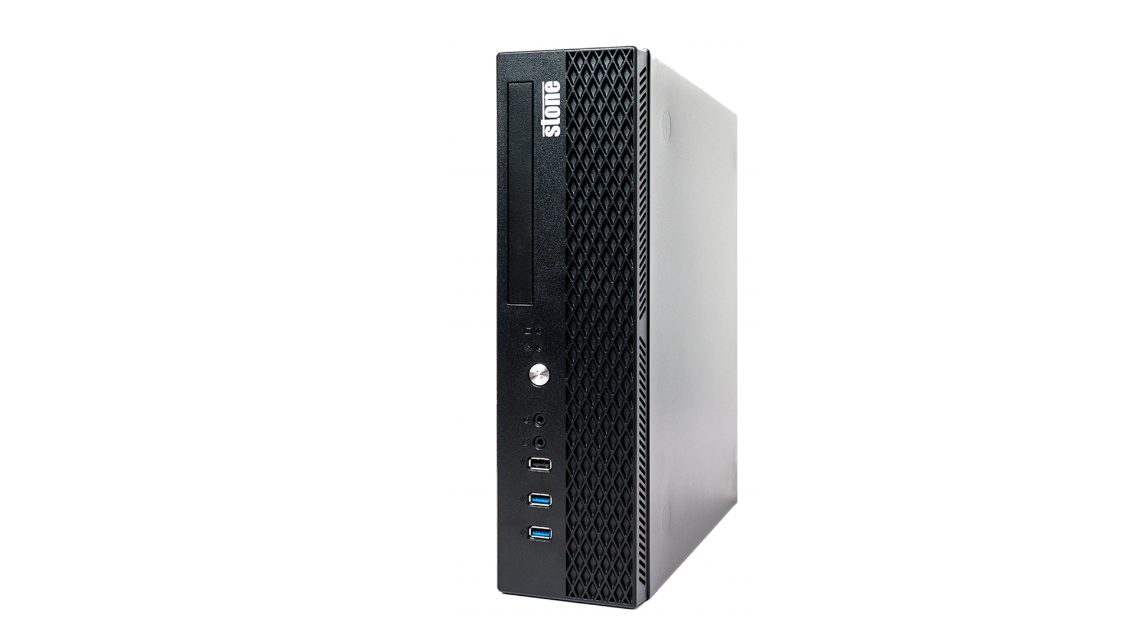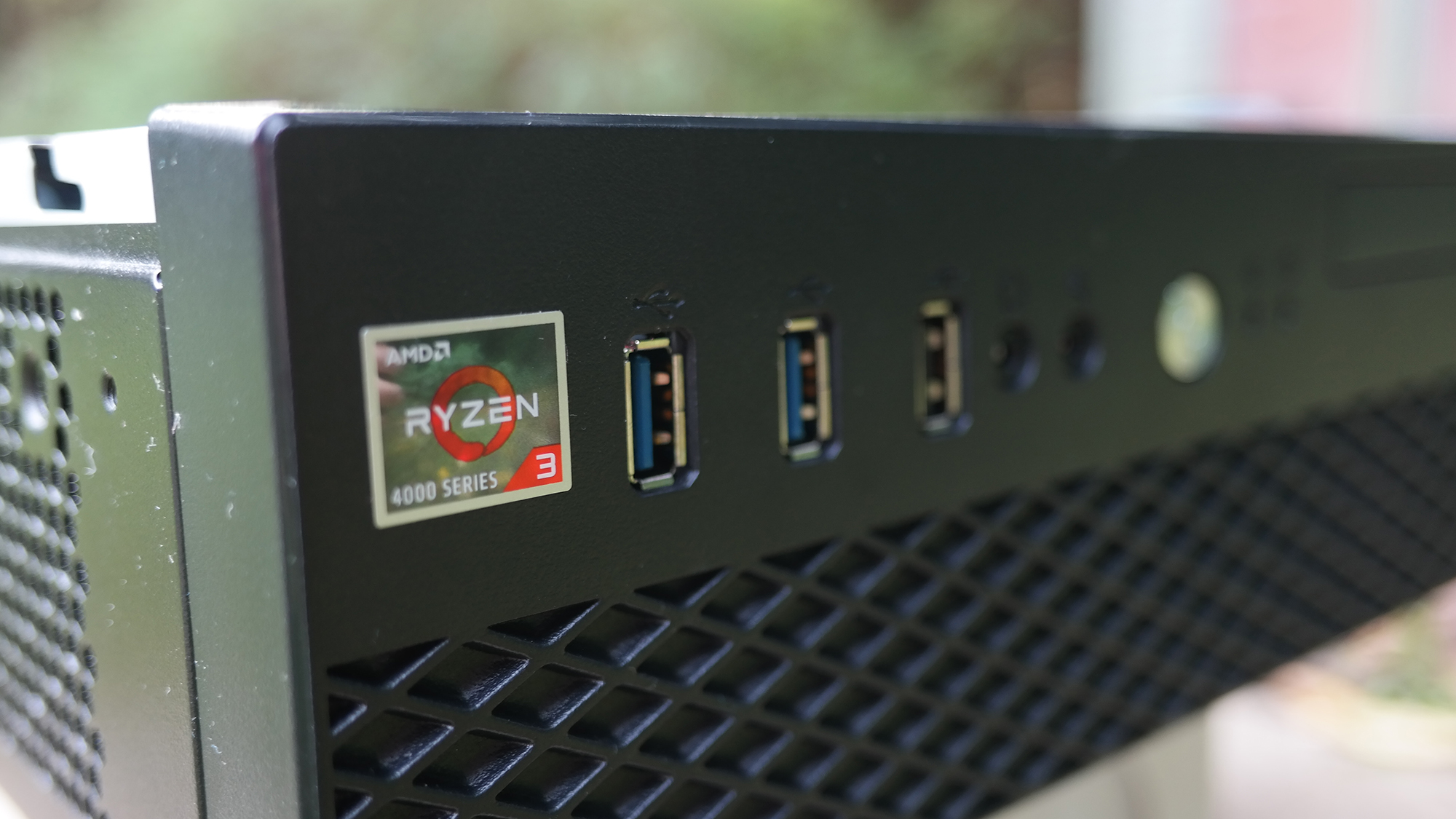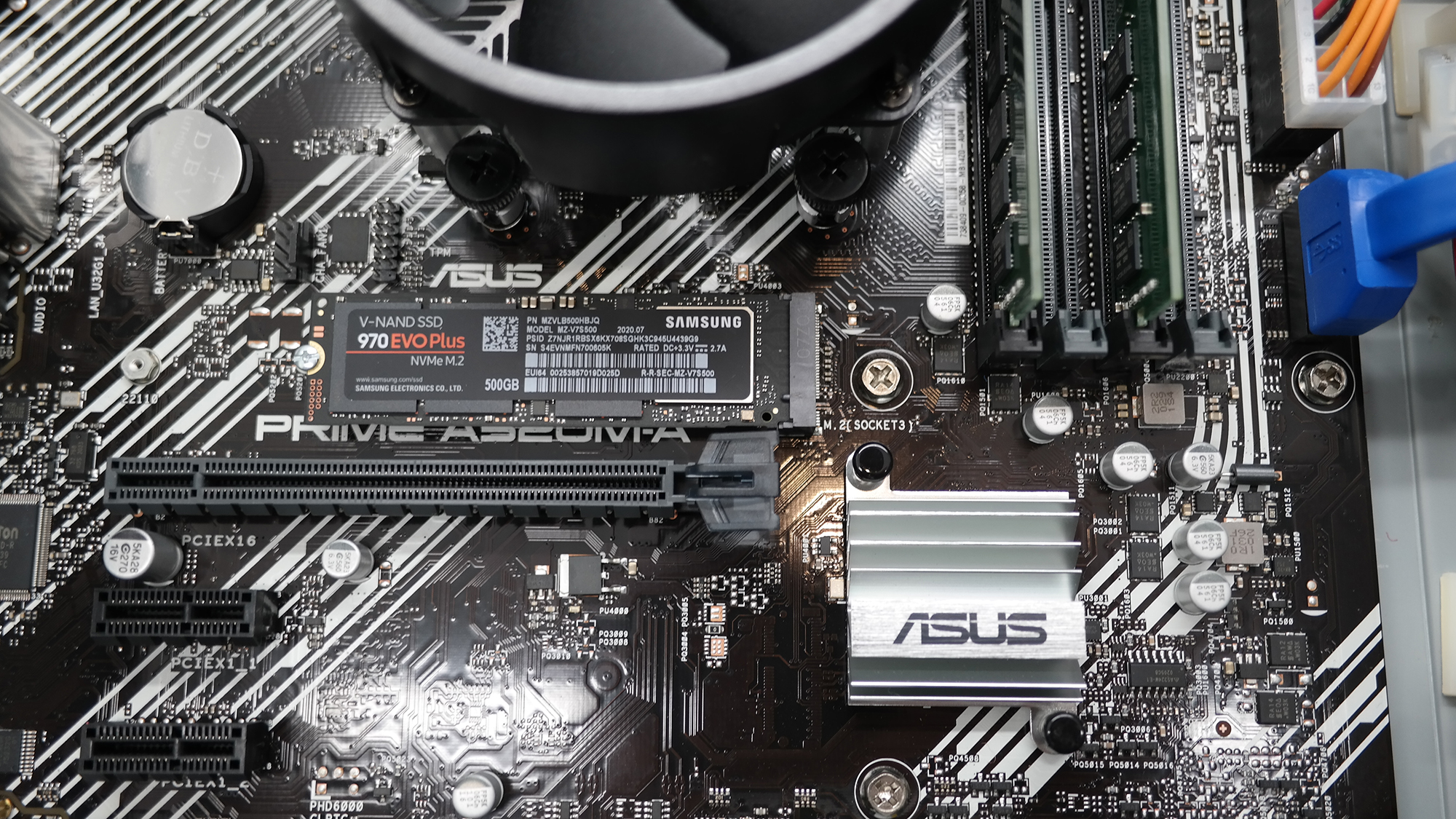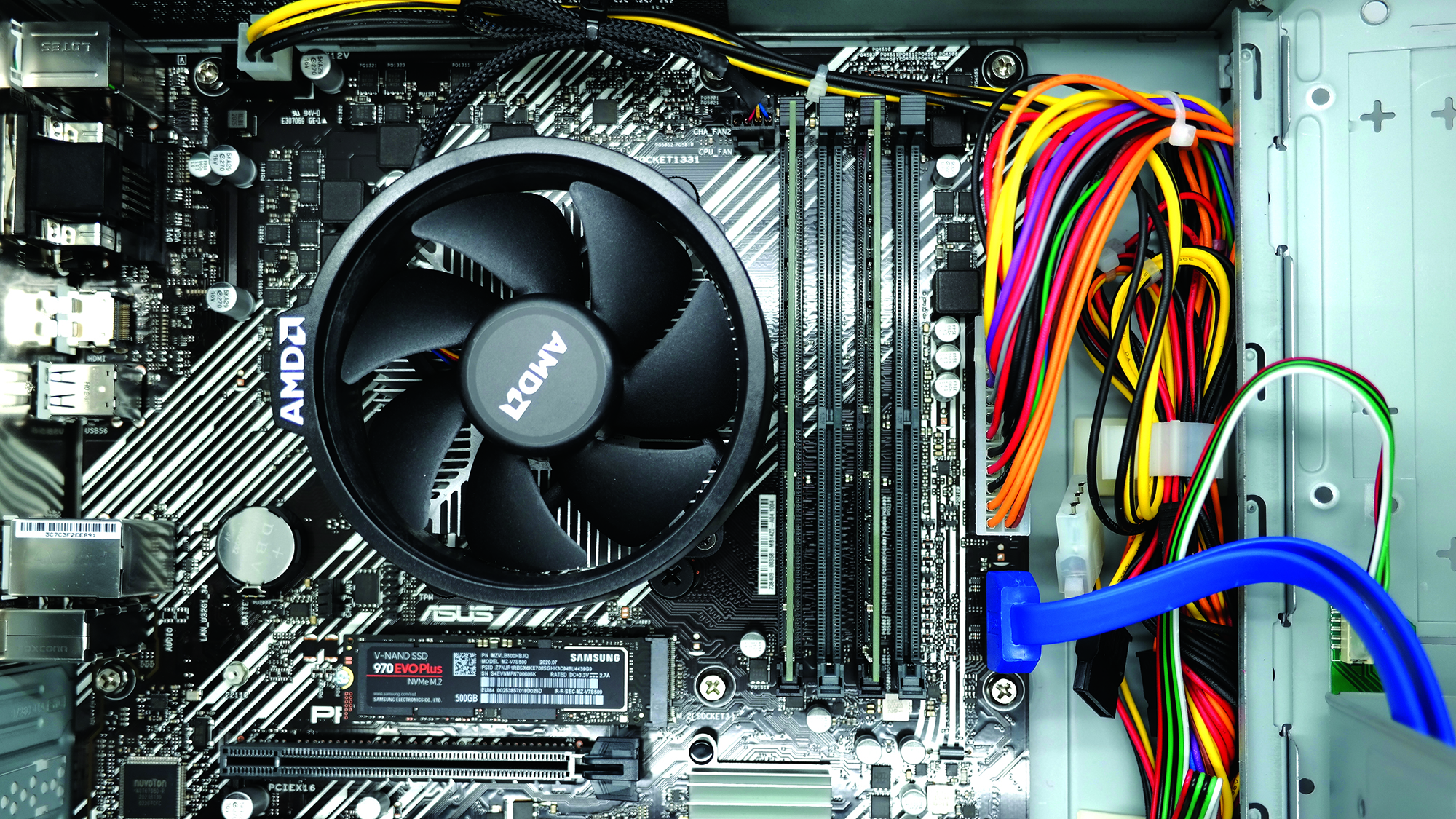StonePC Lite (Ryzen) review: A winner for price and performance
Corporate buyers take note: AMD’s Ryzen 4000 Pro Series of chips are a genuine match for Intel vPro


-
+
Compact footprint
-
+
Excellent performance for the price
-
+
Great graphics acceleration
-
-
Limited expandability

Stone is one of the UK’s biggest suppliers of computers to both education and local government. It tends to avoid the limelight of reviews, but this trio of StonePC Lite systems – called STONEBLT-018 for the Ryzen 3 version, STONEBLT-019 for the Ryzen 5 and STONEBLT-020 with a Ryzen 7 – are exceptional.
They’re the first small form-factor PCs we’ve seen with AMD’s Ryzen Pro 4000 chips inside, but we’ve seen what these chips can do in larger models from both Zoostorm and Xenta, and while they will never garner the headlines of Ryzen’s 5000 Series, it’s easy to see their appeal to IT managers.
StonePC Lite (Ryzen) review: Ryzen 4000 Pro
First, we need to break down AMD’s mystifying naming conventions, because in essence the 4000 Series of desktop chips is simply the 3000 Series with Radeon graphics. That means it’s based on Zen 2 architecture, while the 5000 Series is based on Zen 3.
The “Pro” in the name reflects the security and management features in this series of chips, which sit roughly in line with Intel’s vPro processors. For example, AMD’s Memory Guard feature uses a coprocessor that will encrypt your RAM and storage without recourse to software.
There are three main Ryzen 4000 Pro chips in the family: the 4350G, 4650G and 4750G. AMD also produces variants with a GE suffix, which have a 35W thermal design power (TDP), compared to the 65W of their big brothers. But don’t start thinking that any of these systems guzzle power. At idle, they sip around 20W, boosting to 61W at peak for the 4350G system and 116W for the 4750G.

The chips’ specs increase as you go up the range. With four cores, the 4350G is always going to struggle in multithreaded tasks compared to the six-core 4650G and eight-core 4750G. There’s also an increase in base and boost frequency – 3.5GHz to 4GHz for the 4350G, 3.7GHz to 4.2GHz for the 4650G and 3.6GHz to 4.4GHz for the 4750G – plus more cache, which gives the Ryzen 5 and 7 a lift in single-core tasks.
StonePC Lite (Ryzen) review: Performance
In our benchmarks, the 4750G scorched its way to an overall score of 324, which is a match for number-crunching workstations of only two years ago. The 4650G’s result of 254 is again impressive for a mid-range chip, while the 4350G’s 149 reflects its four cores.
This doesn’t mean a 4350G-powered PC will feel slow. Far from it. As a 1,114 score in the Geekbench 5 benchmark indicates, it has more than enough power to chew through office-based tasks and in daily use you would struggle to differentiate it from its more powerful siblings. Only when pushed with intense duties that take advantage of all those cores will it struggle.
While we haven’t yet tested desktop PCs with Intel’s most direct competitors inside – these being the Core i3-10100, Core i5-10500 and Core i7-10700 – we can compare their public results on Geekbench and Cinebench. According to those numbers, the AMD and Intel chips are almost neck-and-neck for CPU performance, with single-digit differences between the percentages at each tier.
Where AMD holds a big advantage is in graphics acceleration, especially as you move up the range, but even the 4350G with its six graphics cores is faster than the Intel opposition in GFXBench Car Chase. We saw a much more dramatic lift than we expected when shifting to the 4650G, and that was across a selection of games: F1 2020, Metro: Last Light, Metro Exodus and Shadow of the Tomb Raider.

For instance, F1 2020 jumped from a 28fps average (at 1080p, High settings) for the 4350G t0 47fps on the 4650G, which is the difference between juddery and playable. Don’t expect such a big leap from the 4650G to the 4750G, with averages typically improving by between 5% and 15%.
StonePC Lite (Ryzen) review: Storage and expansion
Some of the improvement between each chip is due to Stone’s choice of supporting cast. It supplements the 4350G with a single 8GB stick of 3,200MHz RAM and a 2.5in 250GB WD Blue SATA SSD, while the 4650G benefits from double the memory and a 500GB version of the same drive. Meanwhile, the 4750G has 16GB of RAM for company and a Samsung 970 Evo Plus NVMe SSD – one of the quickest PCIe 3 drives around.
One advantage of choosing a 2.5in SSD is that it makes upgrading the storage later on tremendously easy: open up the case, which is secured by three crosshead screws, and the Asus Prime A520M-A motherboard’s M.2 slot sits there at the ready. Accessing the 2.5in bay involves undoing a few more screws, a process that also reveals the two spare DIMM sockets (three in the 4350G’s case).
That Asus board also provides two PCIe expansion slots. The bottommost is PCIe 1x, with the obvious addition being wireless networking alongside the physical Gigabit, but you could theoretically add a graphics card into the empty PCIe 16x slot. We say theoretically because there’s only 170mm of room for the card, while the 300W power supply provides limited headroom for power-hungry cards.
StonePC Lite (Ryzen) review: Design
Stone tucks all the unused cables out of sight, but as this is a relatively minimalist offering there aren’t many to worry about. For instance, you might want to add a slimline optical drive at a later point and everything is in easy reach for you to do so.

The case itself is similarly modest and typical of corporate PCs, with nothing fancy about its black finish or thin panels. Stone makes no attempt to add sound dampening, but it doesn’t need to; the slight whine from the two fans (one for the AMD chip, one for the power supply) will be drowned out by office noise. Note that the chassis is compact and can sit in either orientation, living just as neatly under a monitor as by its side.
To round off the package, Stone provides a Microsoft Wired Keyboard 600 and Microsoft Basic Optical Mouse v2.0. Both are lightweight, humble affairs that will neither offend nor inspire. Naturally, Stone can tailor the warranty you want depending on your needs, all the way up to five-year on-site cover, but the price we quote is for one-year return-to-base cover.
StonePC Lite (Ryzen) review: Verdict
With the Ryzen Pro 4000 Series, AMD has created a set of CPUs that more than match Intel’s offerings for power and value. Nor do we see any reason to worry about choosing AMD rather than Intel for businesses. AMD offers a similar promise of platform stability to its rival, including 18 months of “planned software stability” and “24 months of planned availability”, and its management and security features track Intel’s too. The only obvious advantage that Intel offers is its decades of proven delivery for business, while AMD’s corporate ambitions are relatively recent.
So that gives AMD wins for graphics performance, power-per-pound and initial expenditure, while Intel wins for corporate reputation. With budgets under ever-growing pressure, we suspect the powerful 4000 Series will mark an uptick in AMD sales to businesses just as the 3000 Series did for consumers.
StonePC Lite specifications
STONEBLT-018
| Processor | AMD Ryzen 3 Pro 4350G APU |
| RAM | 8GB Kingston 3,200MHz DDR4 RAM |
| Graphics adapter | Radeon RX Vega graphics (six cores) |
| Storage | 250GB WD Blue 2.5in SATA SSD |
| Graphics outputs | 1x VGA, 1x HDMI, 1x DVI-D |
| Other ports | 4x USB 3.2 Gen 1, 2x USB 2.0, 1 x PS/2 keyboard/mouse combo, 1x GbE |
| Wi-Fi | N/A |
| Bluetooth | N/A |
| Dimensions, mm (WDH) | 325 x 335 x 90mm (WDH) |
| Operating system | Windows 10 Professional |
| Warranty | 1yr RTB |
STONEBLT-019:
| Processor | AMD Ryzen 5 Pro 4650G APU |
| RAM | 16GB Kingston 3,200MHz DDR4 RAM |
| Graphics adapter | Radeon RX Vega graphics (seven cores) |
| Storage | 500GB WD Blue 2.5in SATA SSD |
| Graphics outputs | 1x VGA, 1x HDMI, 1x DVI-D |
| Other ports | 4x USB 3.2 Gen 1, 2x USB 2.0, 1 x PS/2 keyboard/mouse combo, 1x GbE |
| Wi-Fi | N/A |
| Bluetooth | N/A |
| Dimensions, mm (WDH) | 325 x 335 x 90mm (WDH) |
| Operating system | Windows 10 Professional |
| Warranty | 1yr RTB |
STONEBLT-020:
| Processor | AMD Ryzen 7 Pro 4750G APU |
| RAM | Radeon RX Vega graphics (eight cores) |
| Graphics adapter | 16GB Kingston 3,200MHz DDR4 RAM |
| Storage | 500GB Samsung 970 Evo Plus NVMe M.2 SSD |
| Graphics outputs | 1x VGA, 1x HDMI, 1x DVI-D |
| Other ports | 4x USB 3.2 Gen 1, 2x USB 2.0, 1 x PS/2 keyboard/mouse combo, 1x GbE |
| Wi-Fi | N/A |
| Bluetooth | N/A |
| Dimensions, mm (WDH) | 325 x 335 x 90mm (WDH) |
| Operating system | Windows 10 Professional |
| Warranty | 1yr RTB |
Get the ITPro daily newsletter
Sign up today and you will receive a free copy of our Future Focus 2025 report - the leading guidance on AI, cybersecurity and other IT challenges as per 700+ senior executives
Tim Danton is editor-in-chief of PC Pro, the UK's biggest selling IT monthly magazine. He specialises in reviews of laptops, desktop PCs and monitors, and is also author of a book called The Computers That Made Britain.
You can contact Tim directly at editor@pcpro.co.uk.
-
 ‘Phishing kits are a force multiplier': Cheap cyber crime kits can be bought on the dark web for less than $25 – and experts warn it’s lowering the barrier of entry for amateur hackers
‘Phishing kits are a force multiplier': Cheap cyber crime kits can be bought on the dark web for less than $25 – and experts warn it’s lowering the barrier of entry for amateur hackersNews Research from NordVPN shows phishing kits are now widely available on the dark web and via messaging apps like Telegram, and are often selling for less than $25.
By Emma Woollacott Published
-
 Redis unveils new tools for developers working on AI applications
Redis unveils new tools for developers working on AI applicationsNews Redis has announced new tools aimed at making it easier for AI developers to build applications and optimize large language model (LLM) outputs.
By Ross Kelly Published
-
 Google layoffs continue with "hundreds" cut from Chrome, Android, and Pixel teams
Google layoffs continue with "hundreds" cut from Chrome, Android, and Pixel teamsNews The tech giant's efficiency drive enters a third year with devices teams the latest target
By Bobby Hellard Published